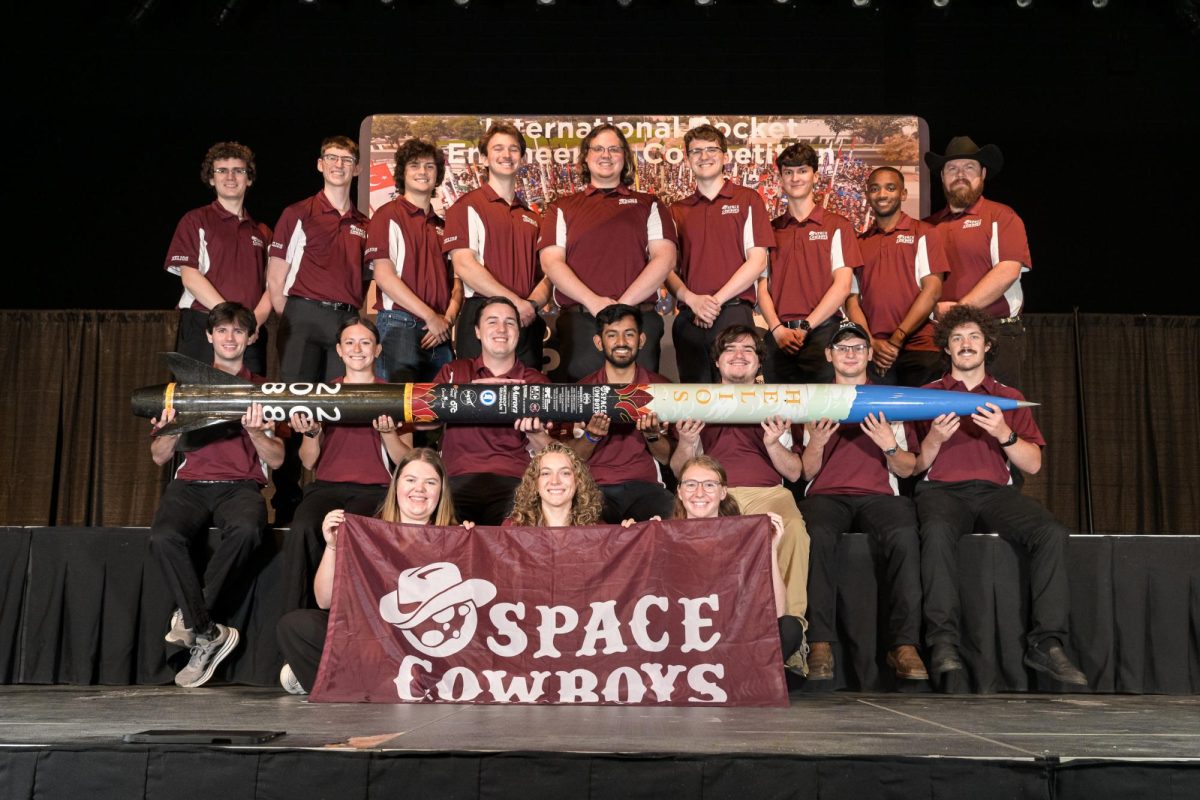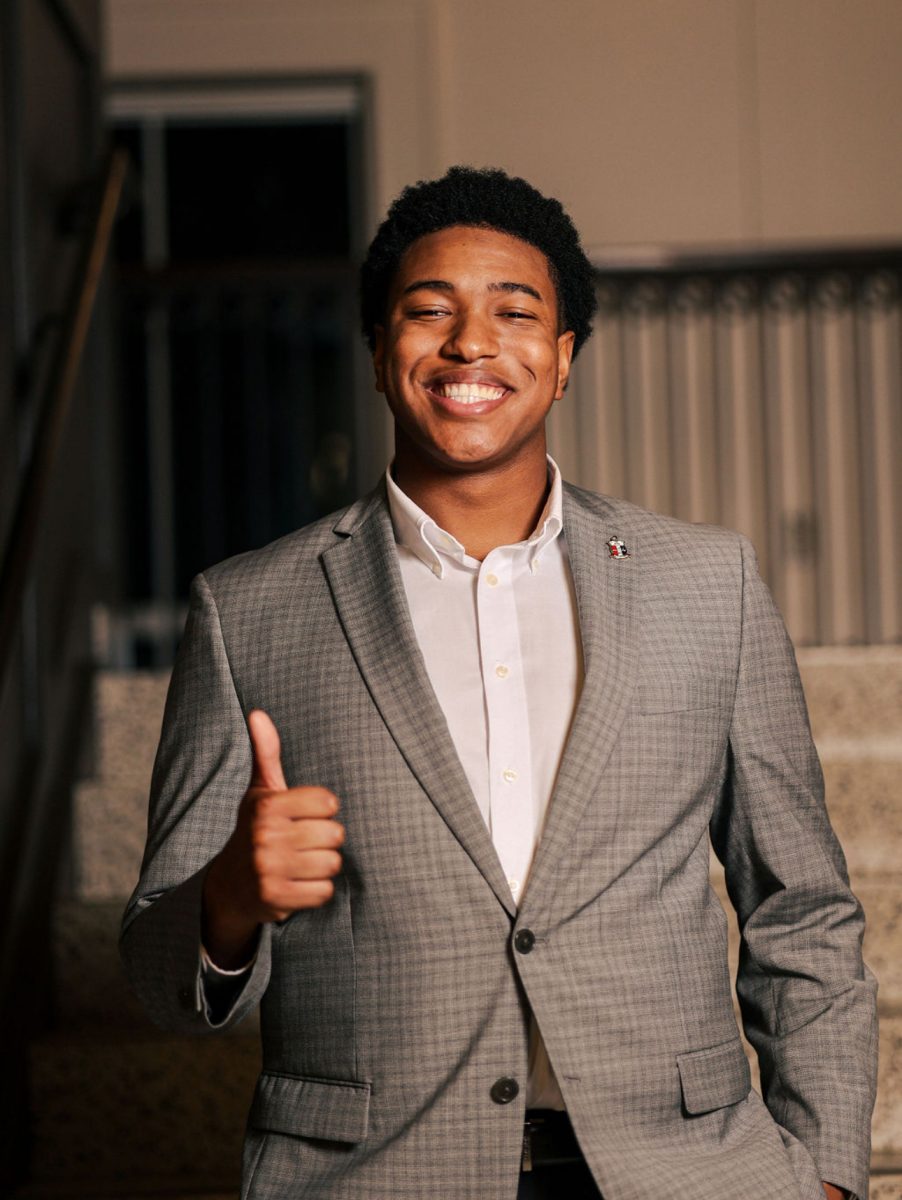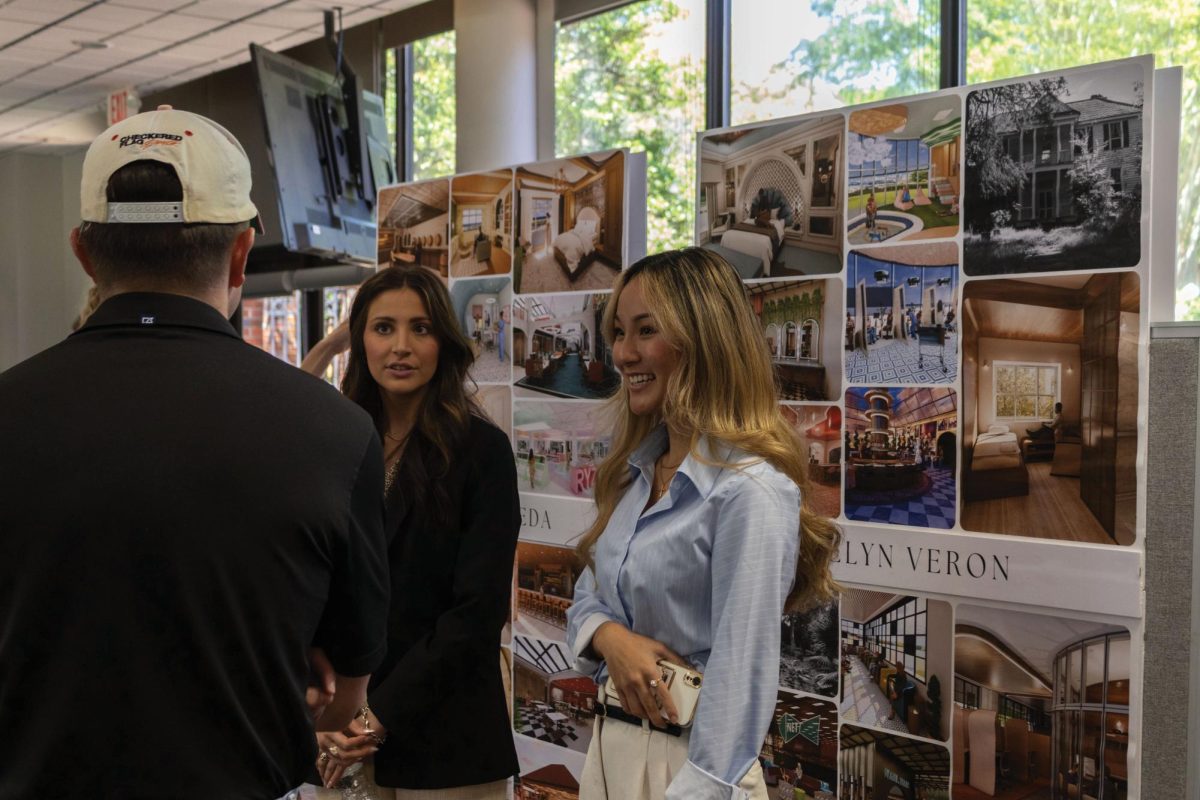Mississippi State University unveiled its new all-electric, autonomous shuttle service last Friday.
MSU President Mark Keenum and a Mississippi Department of Transportation representative, who chose to remain anonymous, arrived at the ribbon-cutting ceremony in the College View residence hall amphitheater aboard the self-driving shuttle.
Created by Beep Inc., these shuttles are the first of their kind in Mississippi and the Southeastern Conference.
Shirley Wilson, the public transit division director at the Mississippi Department of Transportation, said she was interested in the automated shuttles program when she heard about it.
“It is innovative, you know,” Wilson said. “This is the first time that we have tried autonomous vehicles in any of our transit systems throughout the state.”
Wilson said the pilot program is a great opportunity to test this system and see how it works in different environments.
“We look at it expanding,” Wilson said. “Mississippi is very rural, so we cannot just put this type of vehicle in some very open places, unlike on a campus like this, which is closed in. This would be something that could work, but it would have to be looked at on a statewide level for smaller capacity use.”
Jeremiah Dumas, the MSU executive director of transportation, said the approval process for the opening of the Beep Inc. automated shuttles experienced considerable delays.
“We were supposed to start the first week of September, but because of the length of the route, the National Highway Transportation Safety Administration took longer for the approval,” Dumas said. “It was just a little longer than we thought.”
Dumas said the safety of pedestrians is a major priority for the program.
“There is mapping technology that can calculate the speed of someone walking twenty feet off the road,” Dumas said. “It is called lidar…it is a system that sends out millions of lasers at a single point while it is driving. So it is three-dimensionally mapping everything around it.”
Dumas said that anything that comes over the curb line on the shuttle’s sensors, even just a few strands of grass, would be processed by the lidar sensors to process a potential reaction.
In addition, Dumas explained that the shuttles will also have operators on board to operate them if an emergency occurs, as required by the federal government.
“Beep has hired those individuals,” Dumas said. “And that’s part of the next two weeks, will be training them so that they are prepared to operate the vehicle as they need to.”
Despite the more optimistic feelings of the project’s creators, some MSU students expressed their concerns.
Lovely Fairley, a senior electrical engineering major, said she desired a more consistent and time-efficient mode of transportation.
“The main one that I ride is MSU central, and sometimes it takes 15 to 20 minutes depending on the traffic, just to get to one location,” Fairley said. “I believe the shuttle might give us speedier travel to certain buildings and accommodate some who are a little further away but are not at specified bus stops due to a lot of maintenance and construction on campus.”
Jemiracle Clark, a sophomore chemical engineering major, expressed concern about the reliability of the technology in self-driving cars.
“I think it is a good idea, but I also have concerns like what would happen if they calculate incorrectly and end up getting in a wreck,” Clark said. “I have seen videos of self-driving cars and how it will miscalculate how to get in a parking spot or slow down to stop, and it will end up getting in a wreck.”
Fairley agreed with Clark’s point.
“There is a specific company where every single vehicle has to go to a parking lot and they will honk at each other and it will take all night for them to just park,” said Fairley. “I think there are some miscalculations. This is a crazy campus where a lot of students can not drive. So maybe something could happen to the shuttle due to others not driving properly.”
Despite concerns, Fairley expressed interest in trying out the shuttles when they started running.
“I would try the shuttle, just to see how it is,” Fairley said. “I have never been in a self-driving vehicle, so that would be fun. If it works, I would continue to ride it.”




















